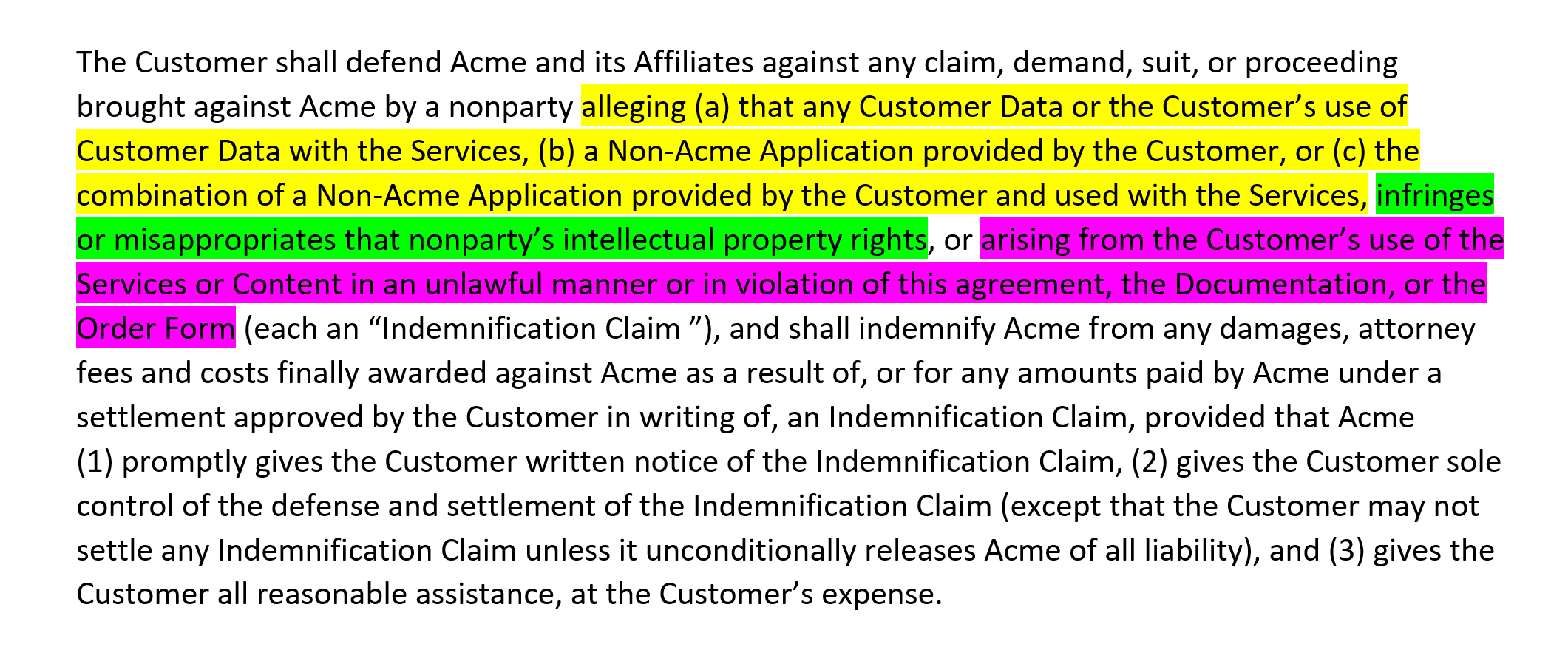MSCD 4.34 says that in a set of enumerated clauses, the period should occur at the end of the last enumerated clause. This post is about what it can look like if you don’t do that.
Consider the sentence above. (It’s a long one.) All we’re concerned with is the initial set of enumerated clauses and how it relates to the rest of the sentence. I see two problems.
First, the enumerated clauses are highlighted in yellow. They’re followed by a modifier; it’s highlighted in green. The modifier is intended to modify each of the three enumerated clause. Even though there’s no risk of confusion, that makes for awkward reading, because readers won’t be used to that sort of modifier.
But wait, there’s more! The parts highlighted yellow and green together specify one kind of claim; the part highlighted in pink specifies another kind of claim. In other words, not only do the enumerated clauses not end after the third enumerated clause because of the modifier, the provision then keeps on going. Indeed, after specifying the second kind of claim, the provision goes on with a second and equally long verb phrase containing another set of enumerated clauses. Your reading slows to a crawl as you figure out what’s going on.
Don’t be that drafter. Make sure the only thing that follows your last enumerated clause is a period.

